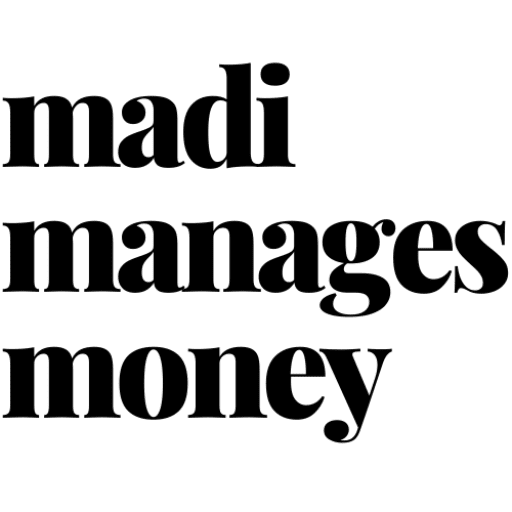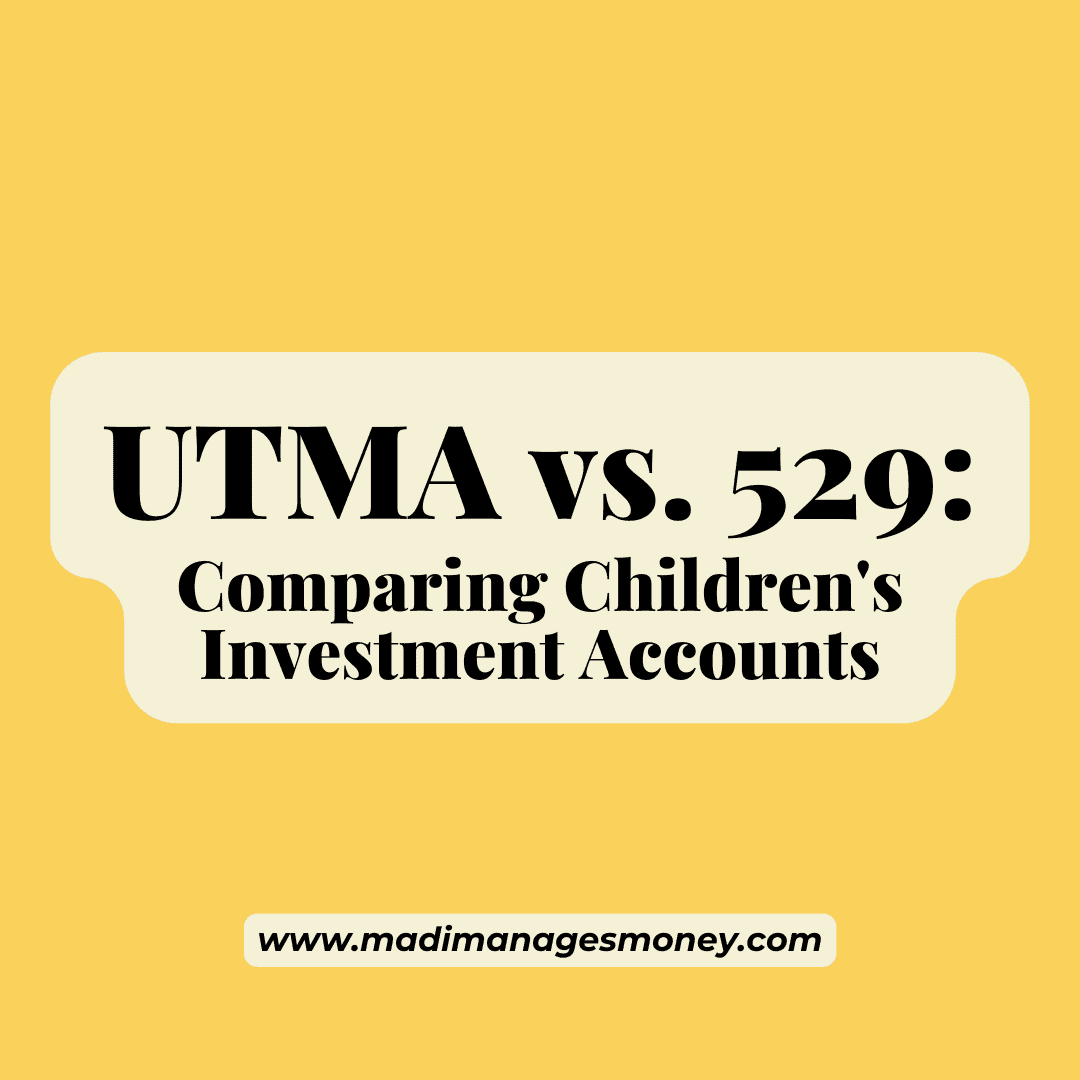This article compares UTMA vs. 529 accounts.
Picking the right type of children’s investment account can be just as important as the investments that go inside. This article directly compares UTMA vs. 529 plan accounts. 🥊
Overview of UTMA vs. 529 Plans
When comparing UTMA vs. 529 accounts, there are trade-offs to consider. The most important ones are:
- Permitted uses of the money
- Tax benefits
- Financial aid impact
- Account control
UTMA accounts provide more flexibility than a 529 plan when it comes to spending. You can use the money you’ve saved in an UTMA for any purpose, not just college, but flexibility comes at a cost.
UTMAs are viewed less favorably for financial aid purposes, and you get no explicit tax benefits by investing in one. They’re essentially taxable brokerage accounts that your child owns but you control.
Any money that you place into one is a true gift. You can’t take it back or repurpose it for another need.
529 plans maximize the benefits of saving for college. Money in them grows tax-deferred and can be withdrawn fully tax-free if used for qualified education expenses.
529s are viewed more favorably for financial aid purposes, because they’re categorized as parental assets. As the owner of a 529 account, you maintain full discretion of when and how the money is used.
To determine the right children’s investment account, the most important question to ask is, How will my child use this money?
Let your answer to this question guide you.
UTMA vs. 529 Plan Direct Comparison
Permitted Uses of Money:
Money in an UTMA account can be used for any purpose without restriction. Money in a 529 plan is intended for qualified education expenses.
Should you use money from a 529 plan for non-qualified expenses, the earnings portion is subject to capital gains tax, plus a 10% penalty. In an UTMA account, your child will owe capital gains tax just the same, but the money can be used for anything.
As parents, we often worry that we’ll save too much into a 529 plan. Plenty of workarounds exist should this happen, including a new, exciting development.
Starting in 2024, up to $6,500 per year (in line with 2023 IRA contribution limits) can be rolled over tax-free to a Roth IRA opened in the beneficiary’s name.
A cumulative limit of $35,000 in 529 to Roth IRA rollovers exists per beneficiary, and certain other restrictions must be followed – but this is a game-changer.
You can use the 529 to Roth IRA rollover as a nice contingency plan should your child not use all of their 529 money. Yet, your primary intention for funding a 529 plan should still be to save for future education needs.
Tax Benefits:
UTMA accounts come with fewer tax advantages than 529 plans.
Any income you earn in an UTMA account (like dividends or coupons on bonds) is taxable each year. Plus, if you’d choose to sell investments at a gain, you’ll owe tax on that, too. You get no tax deductions for contributing to an UTMA.
By comparison, 529 plans are tax-deferred and potentially tax-free, so long as the money is used for the beneficiary’s qualified education expenses. Many states offer a state income tax deduction for money you contribute to a 529 plan.
Tax savings can mean thousands of extra dollars back in your pocket. Don’t underestimate their power!
Financial Aid Impact:
529 plan assets are more advantageous than UTMA assets for financial aid purposes.
A maximum of 5.64% of the 529 account asset value “counts against” financial aid eligibility. For UTMA accounts, you’re looking at closer to 20% of the account value.
This is because assets in an UTMA are considered the child’s, whereas assets in a 529 plan are the parent’s. (I’m assuming you are a parent opening these accounts on behalf of your child while writing this.)
Loopholes exist for optimizing ownership of a 529 account for FAFSA purposes even further, but that’s another post for another day.
Account Control:
529 plans offer more control to the account owner than UTMA accounts. Tax benefits aside, this is the biggest edge 529s have over UTMAs.
Once an UTMA beneficiary reaches the age of majority, which is 18 or 21 in most states, a switch flips giving them full control of the assets. Legally, they can use the money as they see fit, no holds barred.
UTMAs are irrevocable, which is financial-speak for “no go-backsies.” Every dollar that you put into the account will be fully controlled by your child once they reach the magic age, regardless if you change your mind or of their capability to manage the money.
So, yes, money in an UTMA account can be used for any purpose, but remember that you won’t be the person who decides how it’s spent. Your child will be.
As the owner of a 529 account, you are the hand that giveth. Always. The money benefits your child, but you maintain control of when and how much they get.
Change Beneficiary:
529 plan beneficiaries can be freely changed to other family members. The UTMA beneficiary is permanent.
Flexibility can be important, especially to families with multiple children where parents may need to reallocate college money without friction.
Tax-free beneficiary changes also enable a pro-level generational wealth building technique: keeping money invested in a 529 account for future generations.
Account Funding:
More money can be invested in an UTMA account than a 529 plan.
At a certain asset level that varies by state, 529 plans stop accepting contributions. For example, if a 529 account in Pennsylvania grows above $511,758, contributions must pause until the account value falls back below the limit.
Clearly, this is a lot of money. Don’t worry so much about asset limits unless your child receives significant financial gifts. To my knowledge, the lowest asset cap on any state 529 plan is about $350,000 in 2023.
Investment Selection:
UTMA accounts have wider investment selection than 529 plans.
Generally, an UTMA account will provide you with all of the selection that comes with a regular brokerage account. Plus, UTMAs can hold real estate, life insurance policies, and other random things, like royalty checks and fine art.
Most state 529 plans have adequate investment choices to meet the needs of college savers, but it is a limited selection. They provide a closed menu, resembling that of a 401(k), that allows you to put your 529 investment portfolio on autopilot.
Is the UTMA or 529 a better children’s investment account?
The answer depends largely on how you plan to use the money.
If there’s a chance that your child will attend some type of formal education that’s going to cost money, a 529 plan is the efficient choice. If your savings won’t be used for education, then an UTMA will give you flexibility to use the money for other things.
Remember that you don’t necessarily have to choose between an UTMA vs. 529. Many children have both, especially if money you’re saving for them serves multiple future purposes.
My daughter has both an UTMA & 529 account
Chances are great she’s not getting through young adulthood without education expenses. If her parents’ genetics are any indicator, she’ll be smart enough to go to college, but probably not for free. (Sorry, little GF!)
For this reason, contributing to her 529 plan is our primary focus, aside from investing for our own future needs. (Put your own oxygen mask on first!)
Each month, we contribute about $500 to her PA 529 Investment Plan account, plus any extra that gracious family members contribute. We also contribute $20 to $50 a month to her UTMA that I opened through Fidelity’s website.
Her UTMA account serves a different purpose. I envision this money as a future mini nest-egg for her to launch her life after college.
Plus, the account doubles as a landing place for life insurance proceeds should one of us pass away.
Related Post: Pennsylvania 529 Plan Review
Other account types to consider
Taxable brokerage account. You can always save for your children in a taxable brokerage account in your own name. This is a great way to get your money invested before you’re ready to fully commit to its intended use.
Custodial Roth IRA. If your child has earned income, you might consider opening a custodial Roth IRA account. Money invested in a custodial Roth IRA is controlled by you on behalf of your child and can grow tax-free, forever, provided your child uses it in retirement.
The earned income part is key. You cannot contribute financial gifts to a Roth IRA if your child has no earned income.
Related Post: 3 Roth IRA Strategies to Grow Your Family’s Wealth
Conclusion
Our journey through the bells and whistles of UTMA vs. 529 accounts ends like it started. When in doubt, ask yourself, How will my child use this money?
If they might need to pay for education, whether that be private K-12, college, vocational school, or grad school, you should open a 529 plan.
I think of saving for college like this: Every dollar I invest for my child is a hedge against a future dollar of college debt.
If your child won’t have education bills, then I’d consider the UTMA. Investing early and often for your child – instead of letting their money sit in a checking account – can create a pool of money that might change their life as a young adult.
Money in an UTMA account can be used for anything. Just remember, it’ll be your child – not you – who decides how it’s spent.
Resources:
The opinions voiced in this material are for general information only and are not intended to provide specific advice or recommendations for any individual. To determine which investments may be appropriate for you, consult with your financial advisor.

